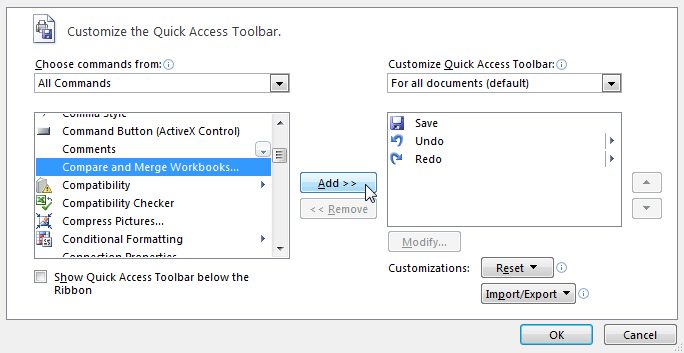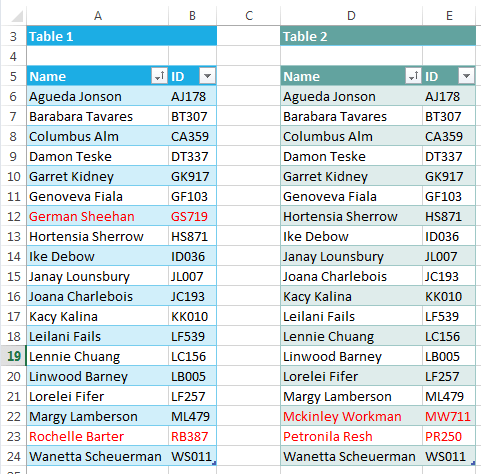
:max_bytes(150000):strip_icc()/Track_Changes_Excel_01-185552ab7fa6400ab6d8a2ace0a3d053.jpg)

You can refer to the following steps to merge multiple workbooks into one workbook: 1 open all workbooks contain all merged workbooks and the destination of workbook. Here in the “Value to Replace” enter the text “.xlsx” and leave “Replace With” blank (here idea is to remove the file extension from the name of the workbook). Combine multiple workbooks into one workbook.So, right-click on the column header and select “Replace Values”.At this point, you have merged data from all the files into your power query editor and, if you look closely you can see a new column with the name of the workbooks from which data is extracted. From here, the next thing is to select the table in which you have data in all the workbooks and yes, you’ll get a preview of this at the side of the window.Now, you need to combine data from these files and for this click on “Combine & Edit”.In the end, click OK, and once you click OK, you’ll get a window listing all the file from the folder, just like below.Here you need to locate the folder where you have files.For this, go to Data Tab ➜ Get & Transform Data ➜ Get Data ➜ From File ➜ From Folder.This is perfect for when you want to verify the updates made by other users and need to compile the final version of the document. Now, the next thing is to open a new Excel workbook and open “POWER Query”. The answer is simple You can do this by using the Compare and Merge Workbooks command (this command will have to be added to the quick access toolbar, since it’s not available on the Review tab).First of all, extract all the files from the sample folder and save that folder at the desktop (or wherever you want to save it).The results are returned in a window in which you can see the differences side by side. Enable the Compare and Merge Workbooks feature in your Excel Although, the Compare and Merge Workbooks feature is available in all versions of Excel 2016, Excel 2013, Excel 2010 and lower, this command is not displayed anywhere in Excel by default. In addition to comparing contents of worksheets, you can use Spreadsheet Compare to check for differences in VBA (Visual Basic for Applications) code. This trail can help you find and correct mistakes before the auditors find them. You need a trail for your critical workbooks that shows the changes month over month or year over year. Say your organization is due to be audited. You can use the PivotTable/PivotChart Wizard to link all your data into one PivotTable or PivotChart. However, you may have instances where the data is located across multiple worksheets in Excel 2016 but you want to have it all in one PivotTable or PivotChart. To show cell formatting from the workbook, click Home > Show Workbook Colors. Typically, data for PivotTables is listed on one worksheet in Excel 2016. Click Home > Export Results.Ĭlick Home > Copy Results to Clipboard to copy and paste the results to another program. You can export the results to an easier to read Excel file. There's also an option for getting a high-fidelity look at each worksheet that shows the cell formatting, close to what you'd see it in Excel. If you want to save your results or analyze them elsewhere, you can export them to an Excel file or copy and paste them into in another program, such as Microsoft Word.

Other ways to work with the comparison results The lower-left pane is a legend that shows what the colors mean. For example, cells with "entered values" (non-formula cells) are formatted with a green fill color in the side-by-side grid, and with a green font in the pane results list. If the cells are too narrow to show the cell contents, click Resize Cells to Fit.ĭifferences are highlighted with a cell fill color or text font color, depending on the type of difference. If a worksheet is hidden in a workbook, it's still shown and compared in Spreadsheet Compare. In the side-by-side grid, a worksheet for each file is compared to the worksheet in the other file, beginning with the leftmost worksheet in each. Changes are highlighted by color, depending on the kind of change. Details appear in a pane below the two grids. The workbook on the left corresponds to the "Compare" file you chose and the workbook on the right corresponds to the "To" file. The results of the comparison appear in a two-pane grid. Learn more about how passwords and Spreadsheet Compare work together.
#What is the compare and merge workbooks excel 2016 password
Note: If you get an "Unable to open workbook" message, this might mean a workbook is password protected.


 0 kommentar(er)
0 kommentar(er)
